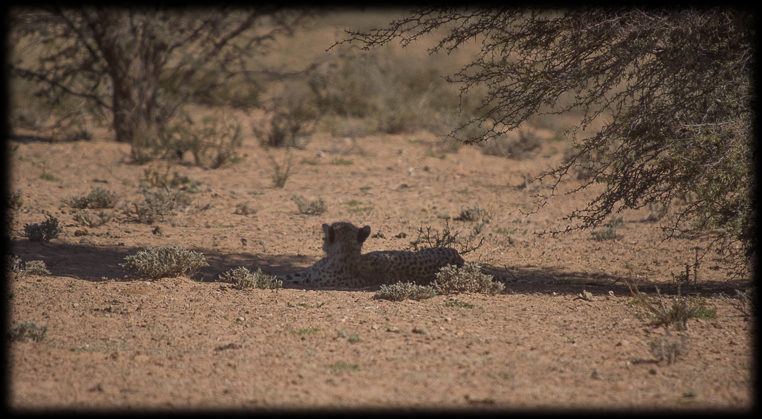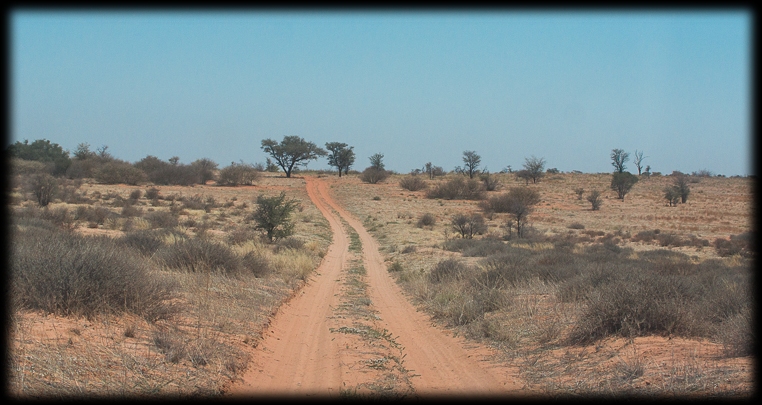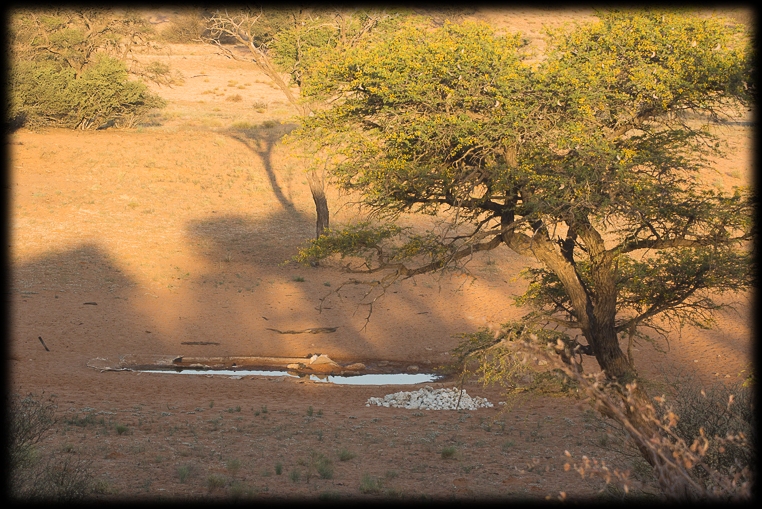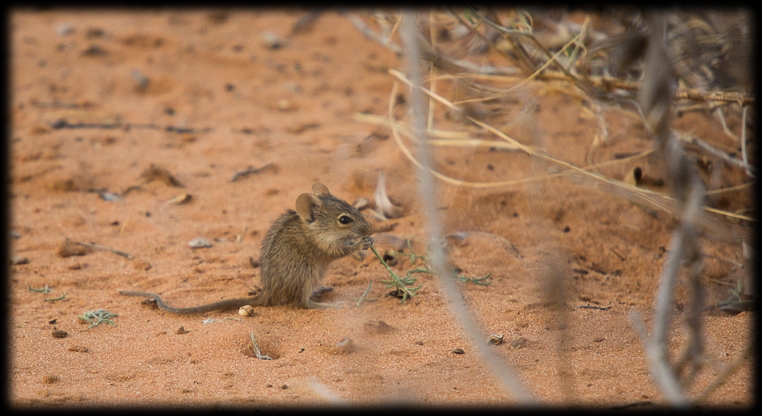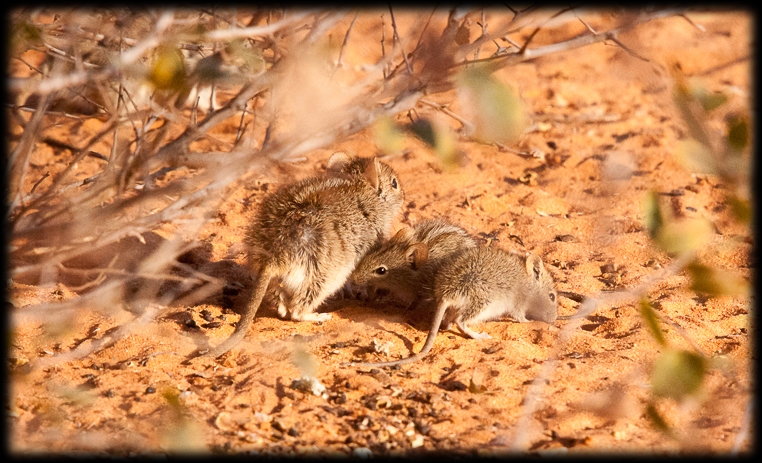Day 3 - 5th October
We woke up nice and early and went down stairs and made our coffee and sat on the deck at about 5h15am. It was still early October so the light had not risen yet. As we sat in the semi darkness the birds started to awaken and entertain us with a chorus of sound.
The waterhole was quiet but is was a dream first morning in the park. We very slowly packed the few items into the van and unfortunately had to depart as we had a long days drive to Gharagab. In October the gate opens at 6am but we were enjoying the morning so much we only departed at 6h35am after collecting our permit.
The plan for the day was fairly simple drive south then over the upper dune road and then north. Not everyone manages their trip the same but again today SO and me use the long drive to assess our surroundings and start to take some photos but the main objective is to continue the distressing process which normally takes us a few days. The reason we do this is for us anyway to fully enjoy KTP we need to get all our current life challenges to the back of our minds.
Our first nice sighting of the drive was:
Steenbok
Reproduction and Development
Gestation period: 170 days. Litter size: 1. Weaning: 3 months. Sexual maturity: Females as early as 6-7 months, males begin to mature around 9 months. Life span: 10-12 years.
Baby steenbok may be born throughout the year, and can stand and walk just a few minutes after birth. However, the infant is usually hidden away by its mother for a few weeks before beginning to follow her around.
Ecology and Behaviour
Steenbok tend to be most active during the day, although when temperatures peak at midday they may seek refuge in shade. This species appears to live in monogamous pairs which share a territory some 4-100 hectares in size - however, the two animals are usually found apart and only come together to breed. The territory is marked by both sexes by using dung heaps. When threatened, steenbok will hide by lying on the ground and freezing in order to avoid the danger. If the threat continues to approach, they will rocket away for a short distance and then try to hide again. Aardvark burrows may be used as refuges.
Family group: Solitary, although a stable pair (which meets up solely for breeding) shares one territory. Diet: Mostly leaves from shrubs and trees, but also fruits and grasses. Main Predators: All major predators, including wild cats (both large and small) and pythons. Infants may be hunted by smaller predators such as jackals, raptors, monitor lizards, and baboons.


We drove across the dune road slowly. We take a different strategy to most visitors in that we enjoy the different aspects of the dune roads and the possibility of seeing something different. After the steenbok we had nice sightings of kestrel's, PCG hunting, Northern Black Korhaan (male and female). We were about 16km across when SO asked me to reverse.
She got the bino's out and turned to me and said there is a cheetah over there - i looked and said you are mad. After telling me exactly where to look she was correct a cheetah in the middle of no where. This was on of the best spots on the trip and i still do not really know how she first spotted it.
We continued on the drive and had our first coffee break at Melkviei which also allowed us to stretch our legs. After the short stop we continued north towards Nossob but i must say this stretch of road has never been productive for us and today was no different.
We arrived at Nossob refuelled and bought some more ice, water, wood from the shop for our days at Gharagab. It was now around lunch time and instead of having lunch there we sorted it out and went to sit at Cubitje Quap so we could be entertained by the doves etc.
After lunch we hit the long road north towards the Gharagab turnoff.

